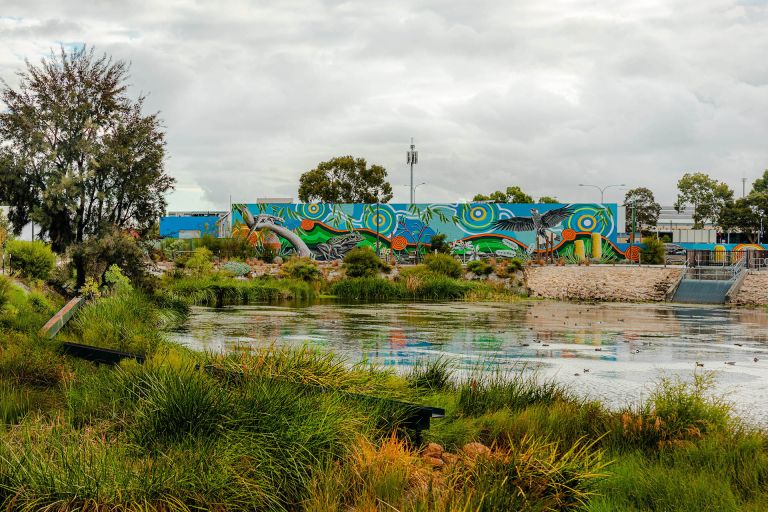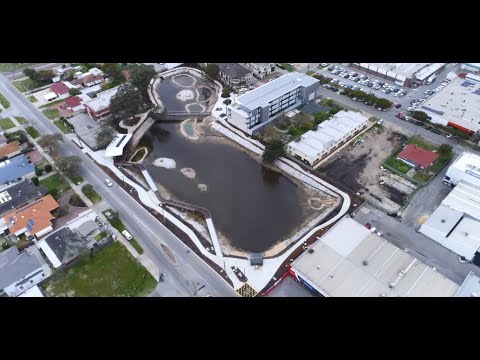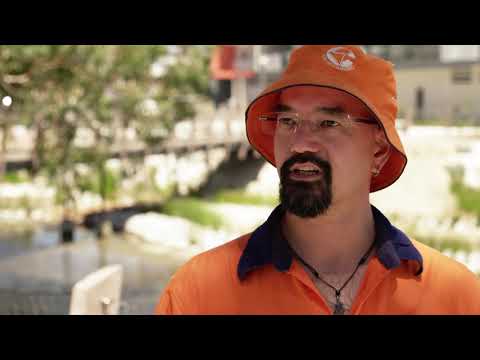Introduction
The City of Canning has transformed a fenced off stormwater basin into a new community smart park.
The park’s new approach to stormwater management provides real-time information on water quality and educational opportunities.
Challenge
Stormwater basins in Canning capture surface water after rainfall. On its way to the stormwater basin, rainwater picks up contamination from grass clippings, oil and detergents from roads.
The polluted water then flows into major waterways like the Canning River. This reduces water quality impacting on biodiversity and local wildlife.
In addition, as Perth’s population grows there is a need to develop quality green space and maximise access to publicly held land that is traditionally inaccessible − like stormwater basins.
Solution
The City of Canning recognised an opportunity to make areas around stormwater basins more accessible. This allowed the council to also generate new public space and improve water quality and biodiversity.
The fenced-off Wharf Street stormwater basin was transformed into a recreational space with a new approach to stormwater management that utilises the role of biodiversity in increasing water quality. The park has been landscaped to enhance the natural environment and new bridges and boardwalks support public access.
Smart technologies support great outcomes in the park, including:
- sensor technology to provide real-time environmental conditions such as water quality and quantity
- interactive augmented reality education stations
Easily accessible real-time information is available to researchers, local government, and the community.
The data generated is used to track water quantity and quality. Healthier waterways can be maintained by using this data to manage water quality and algae production.
The project was developed with funding partners from the Australian Government’s Smart Cities and Suburbs Program, Water Corporation and the Department of Water and Environmental Regulation.
Expected Outcomes
Smart Places Outcomes area
- environmental quality
- health and well-being.
The park is creating quality green space whilst also improving water quality.
Biodiversity has increased, with over 70 native plant species now found at the park.
Multimedia Assets
Resources
Want to implement a similar project? Visit these resources for help.
Smart Places Playbook: Discover
Starting with a focus on the place and its people, the opportunities and the problems to solve.
Smart Places Playbook: Manage and review
Maintaining your assets and realising the benefits of your smart place
Contact Details
Explore other smart projects in NSW
Image

Creating Safer Crowded Places
Testing innovative crowd analysis to improve public safety in crowded places.
Image

Smart CCTV to address community concerns
Bayside Council has delivered a smart CCTV pilot to address community concerns at Depena Reserve.
Image

Smart Irrigation Management for Parks and Cool Towns (SIMPaCT)
Multi-award winning project: Creating cooler parks and gardens for our communities to enjoy, using smart water irrigation systems at Bicentennial Park.
See all our case studies
Search our entire database of Smart Places case studies.


